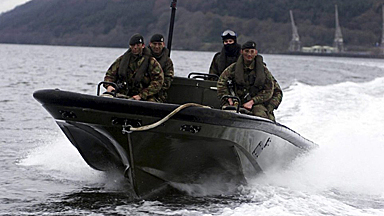Royal Navy Amphibious
Historically this ship was proposed in 1992, ordered in 93, laid down in 94, launched in 95 and commissioned in 98. For Northern Fury however, that timeline is advanced to where she will be commissioned in March of 1994. The three years of fitting out was reduced to two and she was launched in March of 1992. This LPH (Landing Platform, Helicopter), while only marginally larger than the Fearless Class, is substantially more capable and modern. She carries four small landing craft (LCVPs) and up to 18 helicopters in order to land the 830 Royal Marines that can be embarked.
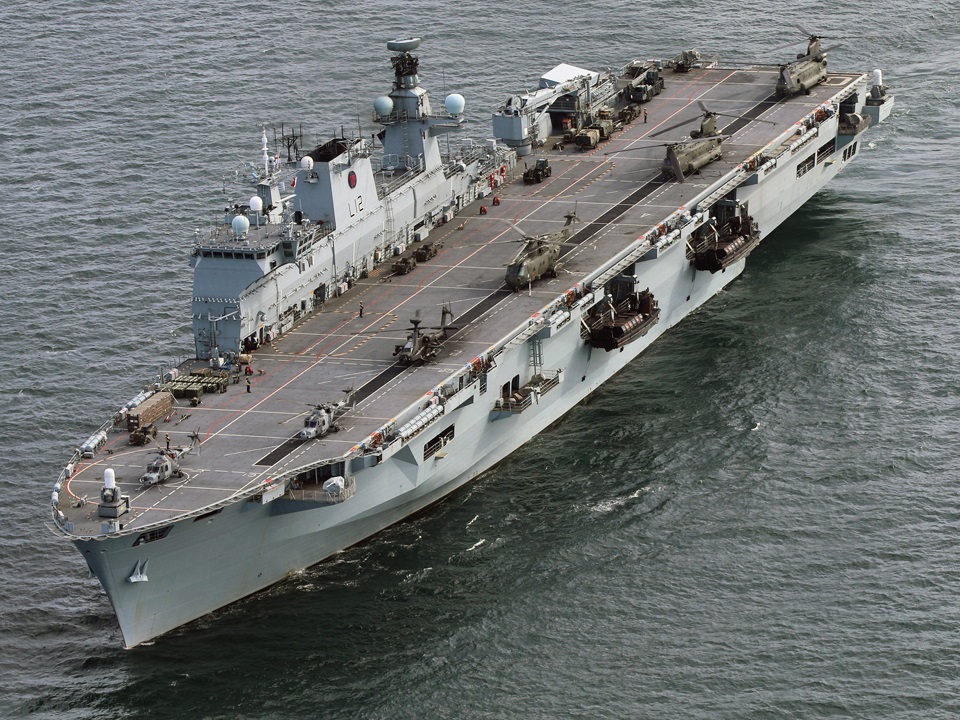
The core element of the Royal Navy’s amphibious capability resides with the two Fearless Class LPDs (Landing Platform Docks). Both have had long and busy careers with the highlight for both being the amphibious operations to retake the Falkland Islands in 1982. HMS Fearless(L10) underwent and extensive refit in the late ‘80s, recommissioning in 1991, while historically HMS Intrepid(L11) was then decommissioned and did not undergo this refit – in Northern Fury she does. Intrepid went to dry-dock in early 1991 and emerged in Nov of 1993 where she was structurally repaired as well as being fitted with 20 mm BMARC and Phalanx CIWS guns, new communications suites and better accommodation. Both ships are home ported at Portsmouth.
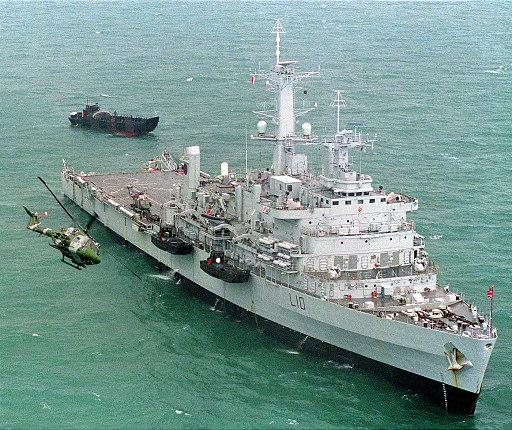
Round Table or Sir Lancelot Class
These six LSL (Landing Ship Logistics) are operated by the Royal Fleet Auxiliary (RFA) and are not strictly amphibious assault ships. They can offload across a shore via their front loading ramp, but are not designed for assaulting the beach. One of the six, RFA Sir Galahad was sunk during the Falklands campaign and has been replaced by a newer and slightly larger ship of the same name. They can transport 400 troops comfortably and over 500 for short durations, additionally a mix of vehicles including up to 12 Main Battle Tanks and/or over 100 land rovers can be loaded. Instead of vehicles up to 46 cargo containers can be loaded as required. Although they cannot support an embarked helicopter, they have two landing decks, one for a Sea King size or smaller aft, and another for a CH-47 or smaller amidships. They have both a front and rear loading ramp.
| Pennant | Name | Status | Remarks |
|---|---|---|---|
| L3004 | Sir Bedivere | Refit | |
| L3005 | Sir Galahad II | Active | New, launched in 1987 |
| L3027 | Sir Geraint | Active | |
| L3029 | Sir Lancelot | Active | Not sold in 89 |
| L3036 | Sir Percivale | Active | |
| L3505 | Sir Tristram | Active | Damaged in 82 and rebuilt |
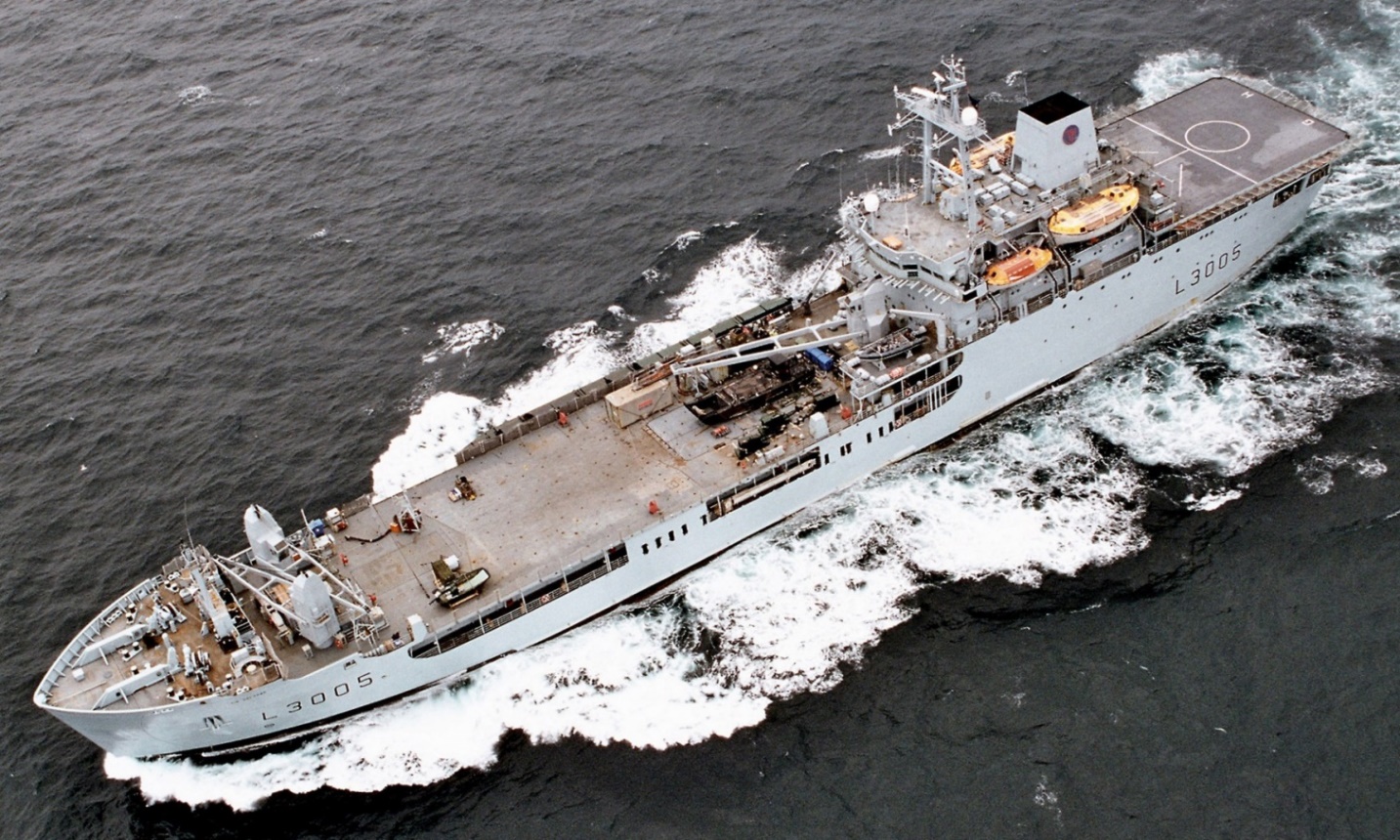
Landing Craft Utility (LCU) are the workhorses of the amphibious fleet. Each of the LPDs carry four of these small craft in their well deck, and in turn the LCUs carry either one tank, four large vehicles or 120 Royal Marines ashore. 14 LCUs are in service, one from HMS Fearless was sunk in and Argentinian Air attack during the Falklands war, and has not been replaced. Four are on each of the LPDs, four more at Pool for training and 2 are deployed on various tasks.
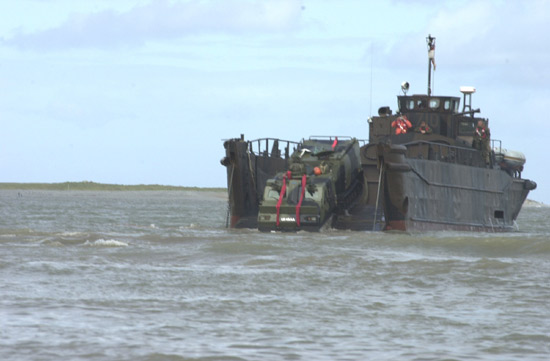
In addition to the LCUs, each LPD and HMS Ocean carry four LCVP (Landing Craft, Vehicle & Personnel) on davits. Older RN LCVPs have been replaced by the Mk5 which provides much more capability than the older models. An entire Royal Marine company (140 troops) can be transported in four LCVPs which can carry 38 troops each (including 3 crew) or a light vehicle up to 210 nautical miles. In total 18 are in service with the RN, plus four older Mk4s are used by the Army.
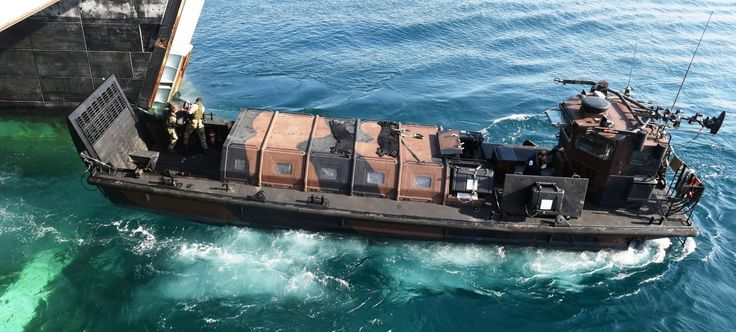
Most RN RHIBs (Ridged Hull Inflatable Boat) are of the 7 Meter variety, they can carry 15 troops at more than 40 Knots speed. Generally, they are unarmed. Dozens are in service, some with modifications and, because the basic boat is available commercially, this can be expanded to hundreds at very short notice.
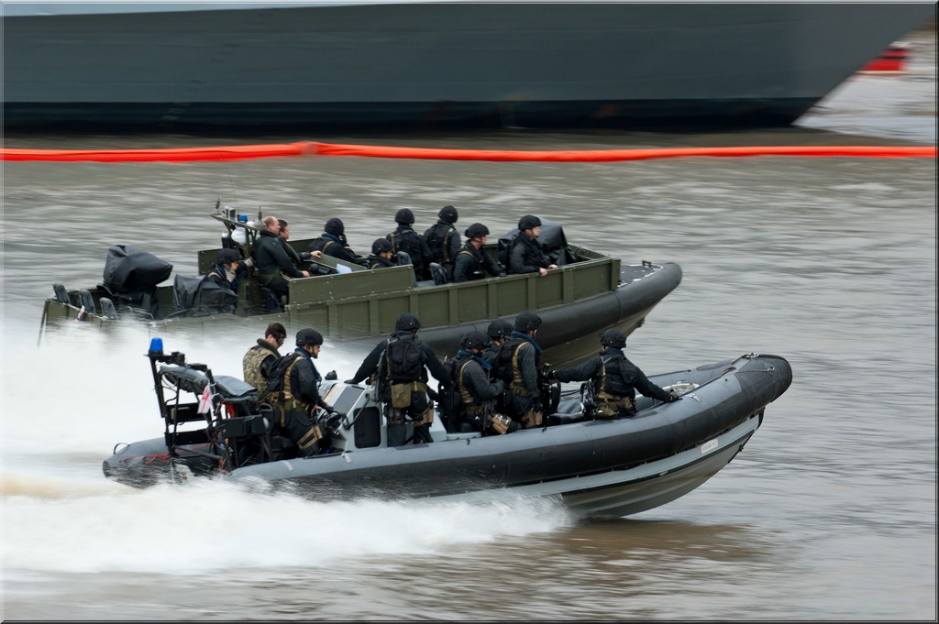
The Ridged Raiding Craft (RRC) pre dates the RHIB by several decades but accomplishes the same task. Available in two sizes, 6.5 and 8 meters, these are widely used by both the RN and the Royal Marines for a variety of tasks, but the main job is to carry a crew of 3 and 8 fully equipped troops to the beach. Speed varies from 33 up to 50 knots depending on load. Dozens of these boats are available at every RN Base and they can be found in use on every ship.
